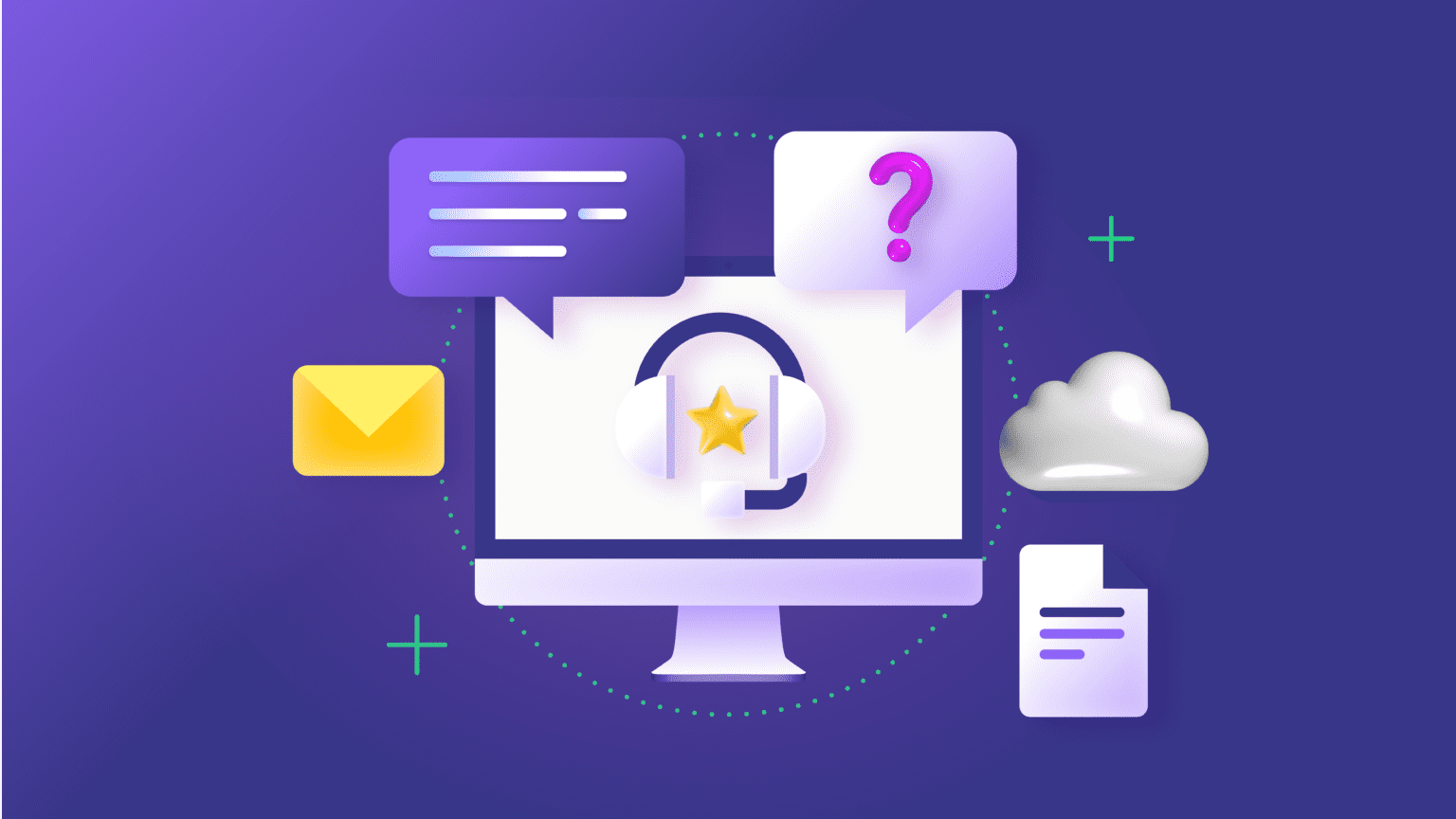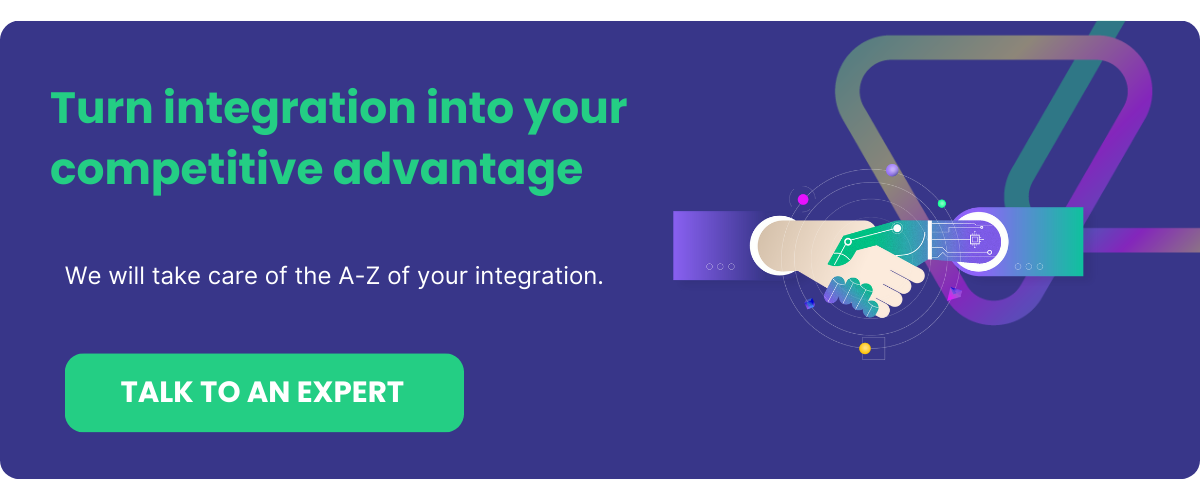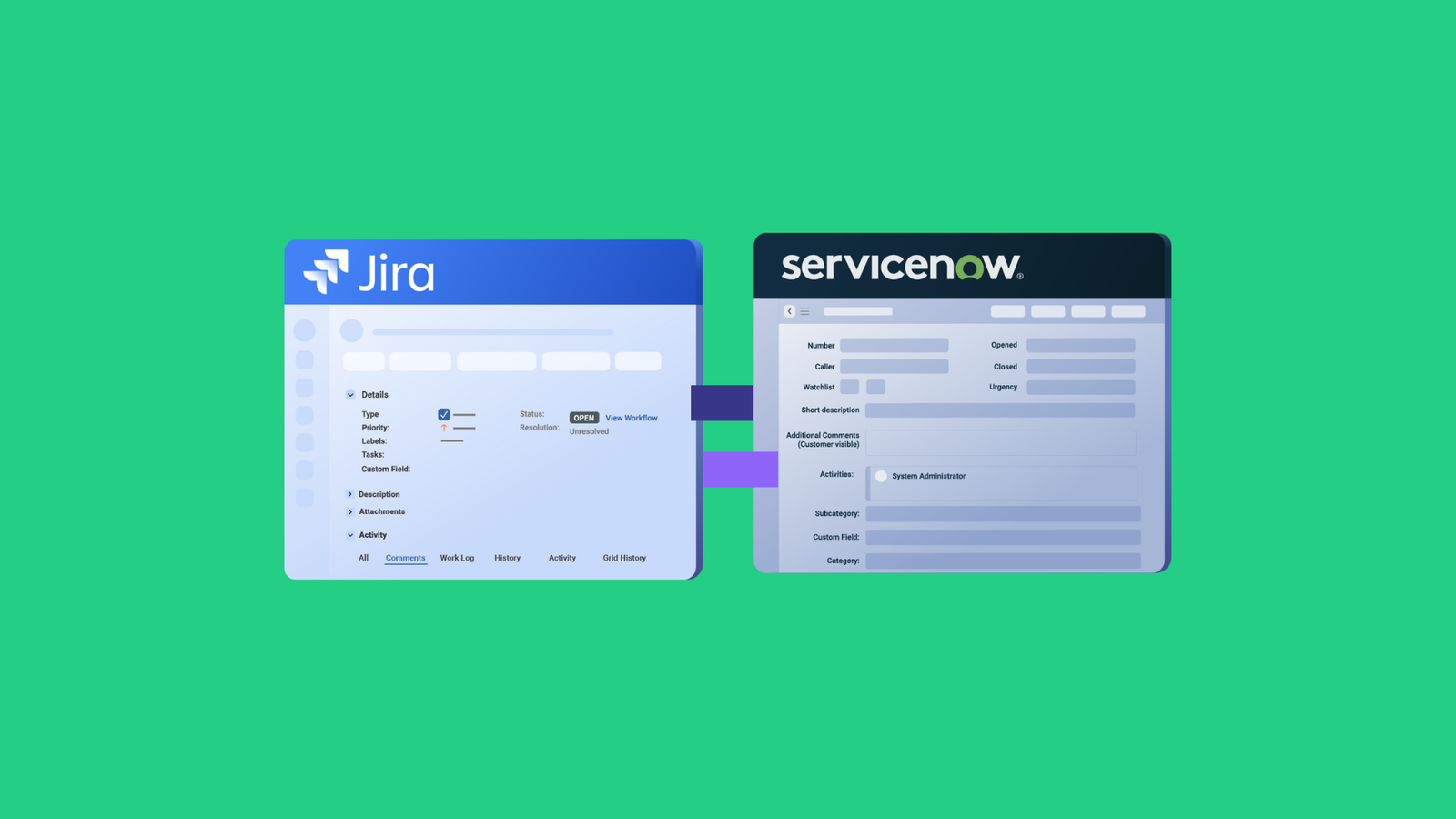Some organizations employ multiple specialist-managed service providers (MSPs) to relieve the workload burden. For instance, IBM manages cloud infrastructure, AT&T handles network communications, and Cisco provides cybersecurity services.
But this presents a problem: how can your organization unify and integrate with all these MSPs in order to improve productivity, drive growth, and prevent data loss? That’s where MSP integration comes in.
You need a third-party integration service provider to sync MSPs with your internal systems as well as connect them with other suppliers.
In this article, I’ll define MSP integration in detail. Continue reading to discover the challenges and potential drawbacks of integrating your organization’s MSPs.
What is MSP Integration?
MSP integration is the process of synchronizing your internal system with managed services providers in order to obtain data and stay connected during your cooperation.
To understand how to integrate MSPs, let’s circle back to how MSPs work in the first place.
Picture This Scenario
Soft Solutions, a software development startup, wants to outsource some of its IT services because they don’t have the IT team or ITSM (IT service management) model for handling them.
So they decided to reach out to Fidelity Corp, a customer service MSP that offers managed services on a subscription or per-use basis. Soft Solutions now has to choose which cooperation model works for them. Afterward, they need to sign an agreement with the MSP — a service-level agreement (SLA).

That brings us to the second scenario: Soft Solutions wants to outsource cybersecurity services.
As a result, they sign a similar SLA with MyShield, an MSSP (managed security services provider) that ensures the infrastructure is always secure and experiences minimal downtime. All is good; systems are running, and Soft Solutions is on a secure, customer-friendly ninth cloud.
But even though everything is fine, Soft Solutions is struggling to get up-to-date information about system performance. They want to get a bead on the mood of their customers by tracking their complaints and pain points through key metrics.
And that brings us back to MSP integration. In both scenarios, syncing data with MyShield and Fidelity Corp will help Soft Solutions get a better understanding of the market.
Since both MSPs have separate systems that are not interoperable, Soft Solutions would need a third-party integration solution to connect them as well as share data with them individually.
MSP Integration Solutions
Some MSP integration solutions are native to the MSPs, while others are standalone tools. Regardless, every integration service provider (ISP) relies on APIs and Webhooks to connect with other systems. Let’s check out some MSP integration tools.
Zapier
When working with multiple MSPs, your team can use Zapier to integrate data into one unified screen. Zapier users can automate integrations using Zaps. Since Zapier also automates your integration flow, you can improve productivity and response time very fast.

SnapLogic
SnapLogic is an integration platform that lets companies use pre-built connectors to sync data between applications, databases, and cloud services. SnapLogic is perfect for integrating your system with MSPs, thanks to its 700+ prebuilt Snaps.

Talend
Talend is an MSP integration solution that provides an ETL low-code platform that merges with any data source or architecture. These properties make Talend an excellent choice for integrating MSPs.

Additionally, Talend uses Stitch ETL to extract insights from automated cloud data pipelines, providing a single source of truth.
Informatica (Intelligent Cloud Services Data Integration)
Informatica is an ETL-based cloud integration tool that allows clients and MSPs to share data from cloud services.

You can use the Informatica Intelligent Data Management Cloud to connect with MSPs using over 50k pre-built connectors for cloud apps like AWS, Salesforce, Azure, and Netsuite. By doing so, you’ll get access to tools like Finance 360 and Reference 360.
Exalate
Exalate is an AI-powered integration solution that supports low-code and fully code-based integrations. This bi-directional integration tool allows you to connect with MSPs thanks to its support for scalable cross-company integrations.

Exalate also supports integration with Azure DevOps, GitHub, Zendesk, Jira, Salesforce, ServiceNow, and more. You can also use Exalate’s AI Assist feature to write custom scripts to control every sync as well as to trigger automatic syncs. For high-volume operations, you can use Bulk Exalate.
IBM App Connect
Organizations can use the IBM App Connect to connect with MSPs—and since IBM provides managed services, you can integrate your system natively with this solution.
IBM App Connect also provides access to prebuilt, AI-powered connectors and templates. With the enterprise solution, you can also build your own integration tool—this will give you more control and autonomy.
Boomi
Boomi is an Integration Platform as a Service (PaaS) solution that allows you to integrate data with MSPs across multiple verticals.

If you sign up for Boomi, you’ll get access to connectors for different applications, cloud services, and other platforms—which will help you integrate with MSPs like SAP and Oracle NetSuite.
Oracle Data Integrator
This is an iPaaS solution that covers high-volume batch integrations. Customers working with Oracle’s managed services can use this connector to integrate with their system natively.

Oracle Data Integrator also provides Git offline support and SAP delta extraction. You can also use its flow-based declarative user interface to map multiple targets as part of a single flow.
Why is MSP Integration Important for Your Organization?
Any organization that relies on MSPs for aspects of its business can bank on the following:
A Unified Ecosystem
For companies using more than one MSP, integration is the sure way to gather every key piece of data into a unified ecosystem. This ensures that your teams sing from the same hymn sheet as the MSP reps on the other side.
Workflow Automation
Integrating data with an MSP paves the way for workflow automation—this is automated integration. As a result, your team no longer needs to manually reach out to the MSP for reports and updates; data goes back and forth automatically with minimal human interference.
Better Flexibility and Scalability
One key consideration when integrating your system with a managed services provider is compatibility. Both parties must find ways to make their systems compatible.

Going forward, this will make collaboration more efficient and flexible. And as a result, your organization can easily scale up or downsize operations without having to decouple or restructure completely.
For instance, NVISIO relies on Exalate to integrate deep tickets with customers. This makes it possible to automatically generate tickets in order to sync comments, attachments, statuses, etc.
Higher profits and savings
MSP integration can help your organization boost ROI by improving the quality of the services they provide.
For instance, integrating data with a cybersecurity MSSP can help you obtain up-to-date information about network outages, UI bugs, DDoS attacks, and other consumer-facing issues. This will help you tailor your expenses to address these issues instead of employing a shotgun approach.
What are the Challenges of Integrating With MSPs?
Some of the potential hurdles to scale before or during MSP integration include the following:
Choosing the Right Integration Tool
The lack of interoperability between most systems makes it difficult to just pick any MSP integration tool out of the box. That’s why you need to evaluate each product offering to make sure they can connect with your MSPs.
Cutting Costs
Although using MSPs can help your business cut costs, you might end up having to overspend if you choose the wrong cooperation model.

For instance, if you choose a subscription model whereas a per-use model suits your company best, you will end up paying for services you don’t even need.
Communicating Clearly
If your organization doesn’t have clear communication channels, integrating MSPs will add an extra headache for your team. This will hamper your productivity and workflow, making it impossible to share information quickly.
Preventing Security Risks
Integrating an MSP makes you vulnerable because it introduces one more potential point of failure. So, if the MSP drops the security ball, your organization will feel the consequences by proxy.
By this logic, the more MSPs you integrate with, the greater the security risk to your organization.
Avoiding Vendor Lock-in
Like in the case of Soft Solutions mentioned earlier, working with Fidelity Corp would mean aligning their processes to create a unified, streamlined workflow—to get them perfectly locked in.
However, this presents a stiff challenge when Soft Solutions decides to discontinue cooperation with Fidelity Corp and de-couple it from their system.
Best Practices For Integrating MSPs
To improve the chances of successful MSP integration, here are some best practices to implement:
- Use an effective model for integration and management: This involves finding a service integration that independently handles and manages the integration of multiple MSPs.
With the SIAM approach to integrating MSPs, you can increase accountability, optimize costs, and improve the quality of services.
- Create detailed SLAs: As the bedrock of the agreement between your company and the MSP, you need to ensure the SLA contains all the deliverables, key metrics, and expected milestones. This will help you prevent and resolve future conflicts.
You also need to review and update SLAs based on your company’s needs and market trends.
- Define roles and responsibilities: To ensure a clear understanding of who does what and the level of access they have, there needs to be a distinct definition of roles and responsibilities for internal teams and the MSP’s representatives. This will establish a proper-defined hierarchy for access and permissions—which bodes well for security and transparency.
- Keep an internal governance structure: If an MSP is handling your IT service, your internal team needs to keep an eye on performance metrics in order to exert a level of control over your system. You also need to ensure the MSPs are abiding by privacy and compliance requirements.
Key Takeaways
MSP integration makes it possible to synchronize data with managed service providers. Businesses can also unify data from multiple MSPs using an integration solution.
- Tools like Zapier, Exalate, and Snaplogic can help admins configure their syncs to control what gets shared. They also offer automation features and triggers for reducing the required human input.
- Integrating MSPs could be a headache when it comes to cutting costs. If you lock in with one vendor, de-coupling becomes a migraine when you want to end your cooperation with them.
- Applying the best MSP integration practices will help your company establish clear communication channels, reduce costs, and boost productivity.
FAQs
What Are Managed Services Providers?
Managed services providers (MSPs) are companies that offer outsourcing services to other organizations. They handle several aspects of the business, such as IT, communication, marketing, HR, cybersecurity, etc.
What Are Managed Security Services Providers?
Managed security services providers (MSSPs) are companies that outsource cybersecurity services to businesses, government agencies, public service companies, and others. Cisco is an example of an MSSP.
Why Do Companies Use MSPs?
Companies use MSPs to reduce costs and increase efficiency. Another reason to use MSPs is to entrust critical infrastructure to experienced professionals. This is a good idea for small and medium-sized businesses with small IT teams.
How Can I Integrate Managed Services Providers?
You can integrate managed service providers using a no-code solution like Zapier or a code-based integration tool like Exalate. This allows you to connect your system with your MSP in order to share data seamlessly.
What is The Best Managed Services Provider?
The best managed services provider is any company that provides an extensive service level agreement (SLA) that covers the core responsibilities of both the provider and the client (you). Also, the best MSPs maintain a spotless privacy and security record.
Recommended Reading:
- How to Get the Most out of Your Workflow Integration
- How Integration Service Providers Can Help Simplify Data Integration
- Exploring Ways To Implement Managed Services Integration
- Integration as a Service (IaaS): Everything Explained
- An Overview of Integrated Service Management (ISM)
- ITSM Integration: Simplify Your IT Services Like Never Before




